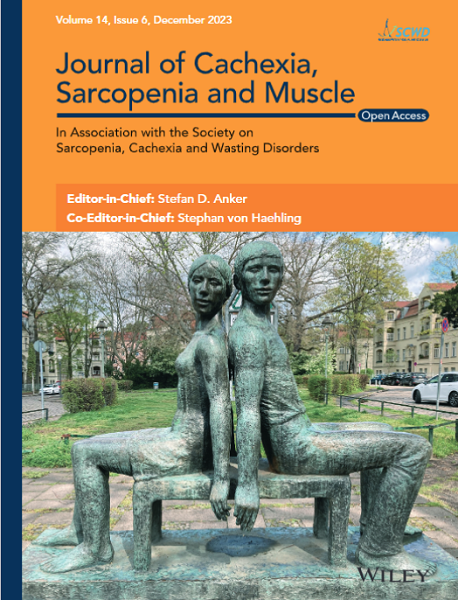Association of Diaphragm Involvement Assessed by Ultrasound With Disease Severity in Facioscapulohumeral Muscular Dystrophy
Abstract
Background
Respiratory involvement is a comorbidity that should not be overlooked in clinical practice in facioscapulohumeral muscular dystrophy type 1 (FSHD1), with a reported association for severe disease outcomes such as wheelchair dependency. However, patients with FSHD1 can have inaccurate ventilatory function assessment results, owing to facial muscle involvement. Additionally, the association between diaphragm involvement and disease severity in FSHD1 patients remains uncertain. This study aims to assess diaphragm involvement using ultrasound technology and to assess potential associations of diaphragm involvement with respiratory involvement and disease severity.
Methods
This prospective, observational, case–control study enrolled genetically confirmed FSHD1 patients from the Chinese FSHD1 cohort and control participants (matched with FSHD1 patients at a ratio of 2:1 based on gender, age at examination and height) between January 2021 and February 2025. Ultrasound examination of the diaphragm and pulmonary function tests were performed to evaluate respiratory involvement in both FSHD1 patients and paired controls.
Results
The final analytical sample included 109 patients: 81 patients (median [IQR] age, 33 [23–43] years; 33 [40.7%] female) and 162 control participants (median [IQR] age, 31 [23–45] years; 66 [40.7%] woman) in the exploration cohort, and 28 patients in the validation cohort. Ultrasound parameters of the right hemidiaphragm for diaphragm excursion velocity (VVS), maximal relaxation rate of the diaphragm (ECHO-MRR) and thickness of the diaphragm at total lung capacity (ThTLC) displayed significant differences between the FSHD1 groups with vs. without restrictive ventilatory defect (RVD). A multivariate model (including variables of sex, age at examination, D4Z4 RUs, VVS and ECHO-MRR) efficiently identified RVD in the ROC curve analysis with an AUC of 0.943 (0.896–0.989). In the validation cohort, applying the cut-off values for VVS derived from ROC analysis to identify RVD in FSHD1 patients, results showed a high true positive rate of 80.0% and a true negative rate of 94.4%. Multivariate Cox regression analyses indicated low VVS and low ECHO-MRR were independently associated with early lower extremity involvement in FSHD1, with adjusted hazard ratios (aHRs) (95% CI) of 2.353 (1.356–4.085) and 2.039 (1.186–3.504), respectively. Multivariate linear regression models indicated that lower VVS (β = −1.686) and ECHO-MRR (β = −1.761) of the right diaphragm were significantly associated with higher age-corrected CSS in FSHD1 patients.
Conclusions
Ultrasound parameters, including VVS and ECHO-MRR, are informative for assessing diaphragm involvement and respiratory involvement in FSHD1. This knowledge establishes diaphragm ultrasound parameters as potential biomarkers of FSHD1 disease severity in upcoming clinical trials.


 求助内容:
求助内容: 应助结果提醒方式:
应助结果提醒方式:


